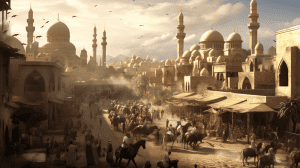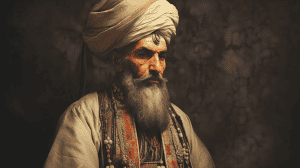The Sultanate of Mogadishu, from the 10th to 16th centuries, was a medieval trading empire in Somalia. With its strategic coastal location, it became a hub for commerce and Islamic culture, connecting Africa, Arabia, and Persia. Its influence waned with the rise of the Ajuran Empire.

A vibrant heartbeat of commerce from the 10th century onwards, the sultanate etched its name into the annals of the African Horn as a formidable force. Its heyday, a dazzling display of sovereignty and wealth, spanned the 12th to the 14th centuries, where Mogadishu glimmered as the golden heart of regional trade. An extensive trading network unfolded under its auspices, radiating influence and prosperity across the land.
Within the sultanate, gold – the sun-kissed jewel of the earth – flowed in abundance. Mogadishu commanded the regional gold trade with unchallenged authority, its own minted currency coursing through the veins of its flourishing economy. The realm was renowned for its architectural prowess, leaving an indelible mark of elaborate structures in the landscape of modern-day southern Somalia.
The baton of power elegantly transitioned from the visionary Garen dynasty to the ambitious Muzaffar dynasty, only to be usurped later by the powerful Abgal Yaquub dynasty. However, the radiant saga of the Sultanate met its twilight towards the end of the 16th century. Succumbing to the relentless onslaught of the Sultan of Oman, the autonomous state of the Sultanate of Mogadishu was dismantled, marking an end to its vibrant era.
Origins of Mogadishu
Enshrined within the sands of time, Mogadishu’s origins are intricately woven into the lives of the Swahili and Somali people who first called it home. The echoes of an ancient past resound within Somalia, substantiated by palpable historical imprints dating back to a staggering 11,000 years ago. Enigmatic granite shelters, centuries-old pottery, ancestral tombs, and other historical traces whisper tales of a time long gone.

During the epoch spanning 3000 BCE to 900 AD, Somalia’s strategic location cemented it as a vital crossroads of civilizations. The land served as a bustling nexus of trade routes extending from Egypt and the Mediterranean, reaching out to the distant lands of India and China. The allure of this fertile land was universal: it was known as Punt to the Egyptians, Barbaroi to the Greeks, and ‘the land of cinnamon’ to the Romans.
Before the curtain rose in the Middle Ages, Mogadishu was one of several Somaliland’s diminutive states. Yet, its significance was magnified by the expansive trade network that connected Somali merchants with their counterparts in neighbouring lands. As the late 9th century unfurled, an influx of Persian and Arab settlers began to infuse the Somali society, sparking a transformative wave of Islam among the indigenous people.
A significant milestone in the annals of Mogadishu’s history was the establishment of the grand Fakr ad-Din mosque in 869. This beacon of faith and community was the brainchild of Fakr ad-Din, who would later lay the foundations of the Sultanate of Mogadishu in the 10th century. This visionary leader would etch his name into history as the inaugural king of the illustrious Garen Dynasty.
Trade
Resourceful Somali traders from Mogadishu etched a prosperous colony into the landscapes of Mozambique, lured by the alluring prospects of extracting gold from the treasure-laden mines of Sofala.
The fertile soils of trade between Mogadishu and other areas along the pulsating Indian coast of Africa were sown as early as the 1st century. The dawn of the 10th century witnessed the arrival of Muslim traders from the Arabian Peninsula, infusing new energy into the area. A surge in commerce was felt among the Swahili cities of coastal East Africa, further propelling Mogadishu’s burgeoning economy by the early 11th century. At the zenith of its prosperity, Mogadishu boasted a sprawling trading network, its pulse resonating across far-flung trading capitals such as Egypt, Persia, India, and China.

As the wheels of trade turned, the denizens of Mogadishu fostered warm and cordial ties with their trading allies. This era saw a myriad of unique fauna, including graceful giraffes, striped zebras, and precious incense, journeying from the heart of Mogadishu to the imperial Ming Kingdom of China. In exchange, the Chinese offered celadon wares, aromatic spices, and powerful muskets, opening up a world of wealth in return for their prized horses, exotic animals, and ivory. The Sultanate of Mogadishu, with its trademark cloth, sacred temple materials, and aromatic resins, left a distinctive footprint in the trading landscapes of the Nile Valley, particularly Egypt.
As ships laden with goods and hopes neared Mogadishu’s harbour, they were greeted by small boats offering a warm embrace of Somali hospitality. This included food, shelter, and assistance in conducting their business affairs in the city. Accepting such an offer meant binding oneself to a host and agreeing to utilize their services as a sales agent during their stay in Mogadishu. The famed Chinese voyager Zheng He, during his visit, garnered a collection of unique creatures such as zebras and lions from Mogadishu and camels and ostriches from Barawa, adding to the exotic charm of his travel tales.
Currency
In the midst of the bustling 9th century, Mogadishu took a monumental step towards economic sovereignty by minting its very own currency. This move mirrored its ambition to fortify its commercial prowess within its expansive medieval trading empire that spanned the Indian Ocean. The crafting of coins, a symbol of its economic independence, not only fortified its commercial standing but also served as a means to lubricate the wheels of regional trade. These coins, a testament to Mogadishu’s economic might, were birthed within the heart of the city.
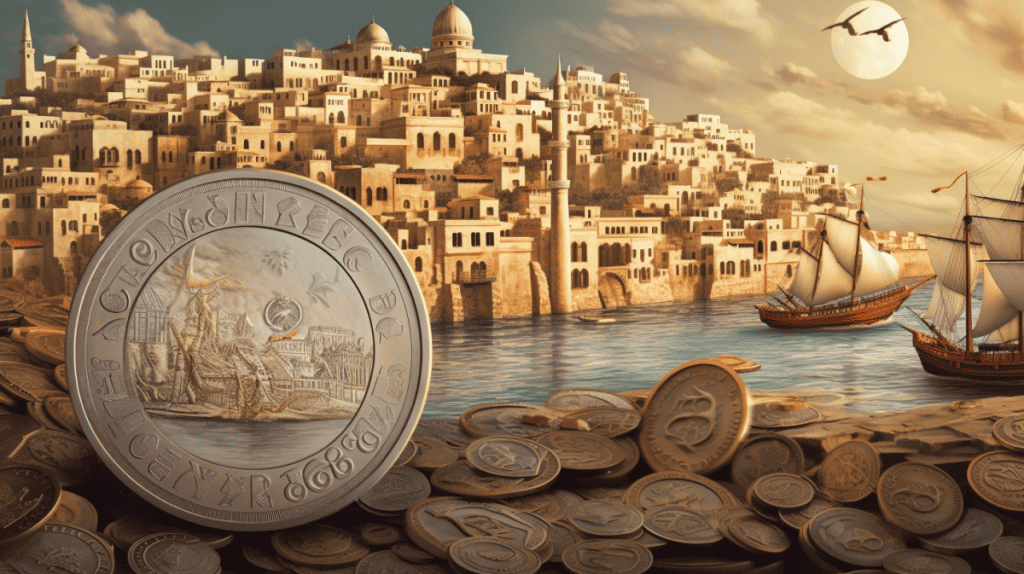
This currency bore the weight of history on its face, its name ever-changing, moulded after the twenty-three successive Sultans who graced the throne of the kingdom. The antiquity of these coins can be traced back to the era of 1323-24 when Abu Bakr ibn Muhammad held the reins of Mogadishu. The currency, stamped in his honour, carried the names of the four revered Caliphs of the Islamic Rashidun Caliphate on its reverse side.
The reach of these Mogadishan coins extended far and wide, their presence felt in distant corners of the contemporary United Arab Emirates. One such coin, a relic of the 15th century, bore the name of the Somali Sultan Ali B. Yusuf of Mogadishu. Bronze reminders of the Sultans of Mogadishu have been unearthed at Belid, nestled near Salalah in Dhofar, Oman. Moreover, archaeological pursuits have recovered an array of these coins from the soils of China, Sri Lanka, and Vietnam.
In the words of British scholar Richard Pankhurst, the majority of these Chinese coins were minted during the Song dynasty, along with those from the Ming and Qing dynasties. The echo of Mogadishu’s coin minting practice reverberated until the 18th century when it was finally silenced.
Colony of Sofala
Nestled on the fertile Sofala Bank, within the boundaries of Mozambique’s Sofala Province, the vibrant town of Sofala stands as a testament to the vision of Somali merchants and seafarers. Its name, ‘Sofala,’ rings out in Somalia as a rallying cry of ‘Go dig,’ a fitting title for a land blessed with boundless natural wealth.
Sofala, one of the earliest known harbours in Southern Africa, is a medieval gem set against the backdrop of the broad estuary crafted by the Buzi River (formerly known as Rio de Sofala on aged maps). Somali merchants, fuelled by the promise of gold, journeyed from Mogadishu to erect a flourishing colony in Mozambique, tapping into Sofala’s generous gold mines.
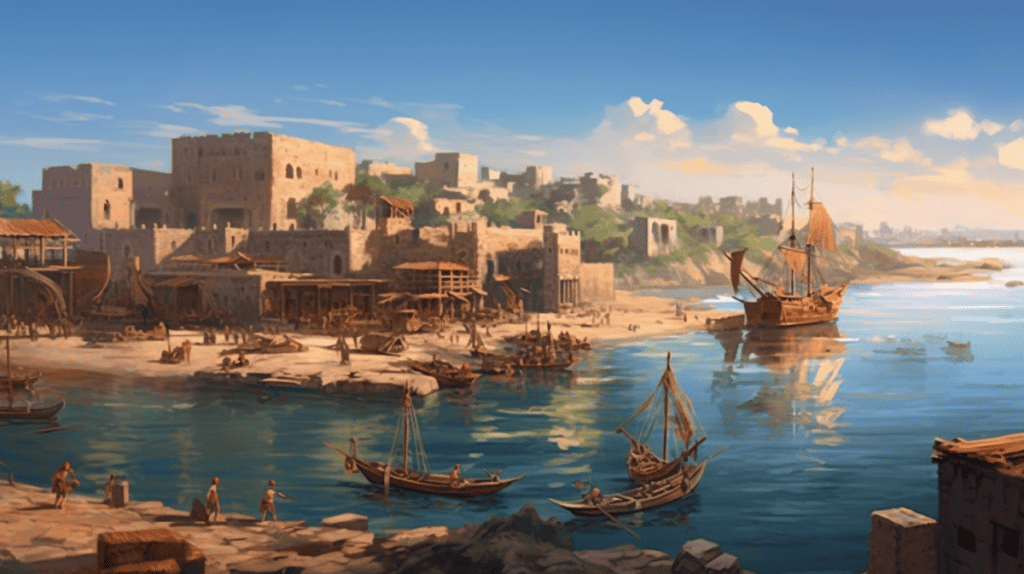
Sofala was intimately connected to the bustling inland market of Manica through the arteries of the Buzi River. This route paved the way to the golden heart of Great Zimbabwe. As the curtains of the 10th century drew to a close, Sofala blossomed into a vibrant trading outpost, seamlessly woven into the expansive Somali global trade network.
However, a dramatic shift in power occurred in the 1180s when Sultan Suleiman Hassan of Kilwa, present-day Tanzania, seized the reins of Sofala. This pivotal event integrated Sofala into the Kilwa Sultanate and immersed it into the vibrant tapestry of Swahili culture. This conquest was no random act but stemmed from the strategic secrecy maintained by Mogadishu merchants, who had successfully kept Sofala hidden from their rivals in Kilwa.
The dramatic unravelling of this secret began when a fisherman, reeling in a sizable catch, was unwittingly led on a journey beyond Cape Delgado, through the Mozambique Channel, and all the way down to Sofala’s fertile banks. The fisherman raced back to Kilwa to share his discovery with Sultan Suleiman Hassan. The Sultan, tempted by the lure of the gold trade, swiftly equipped a ship with valuable cloth and embarked on a journey to Sofala, guided by the fisherman.
Sultan Suleiman Hassan, upon his arrival in Sofala, presented a more appealing deal to the Mwenemutapa, securing his permission to construct a Kilwan factory and colony on the island, thereby permanently displacing the Mogadishans. The Swahili then fortified their trading prowess by navigating the Buzi and Save rivers with river-going dhows, transporting the wealth of gold extracted from the hinterlands to the coast.
Battles of Mogadishu
From the 10th to the 16th centuries, while minor instabilities flickered through history, the most profound clash that marked the era was the fierce confrontation between the Ajuran Empire and Portugal. As Mogadishu was blooming as a trading hub, engaging in prosperous commerce with foreign nations, the opulent city-states of southeastern Somalia fell victim to the ruthless usurpation and pillage perpetrated by the Portuguese. When the covetous gaze of the Portuguese fell upon the territory of Ajuran, the air bristled with tension as the Battle of Barawa erupted between the Sultans and the Portuguese invaders.
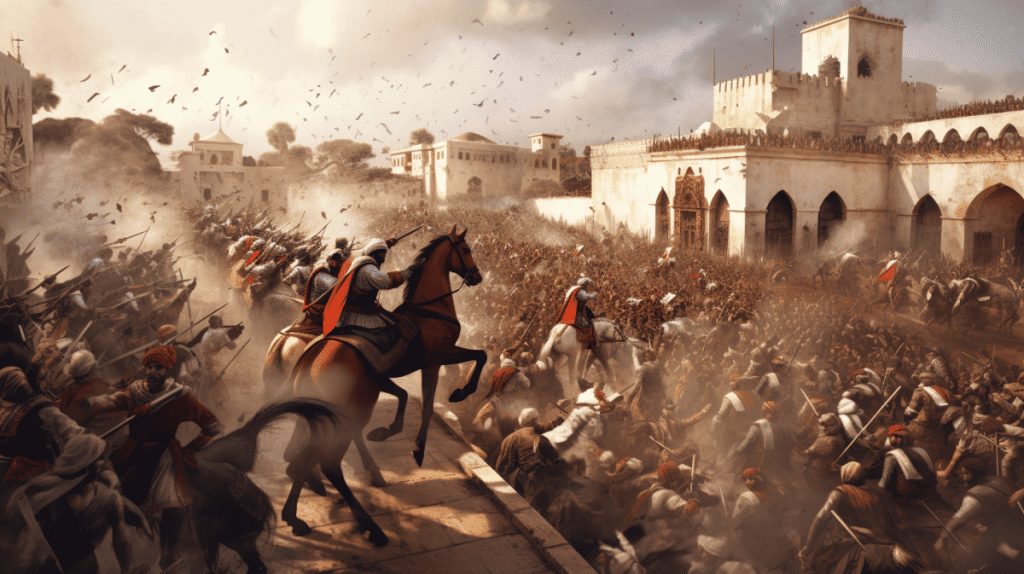
The Portuguese soldiers set the city ablaze, their destruction spreading like wildfire, ransacking the city of its riches. However, the city didn’t bow down easily. The undaunted resistance of the locals and their brave soldiers posed a formidable challenge to the Portuguese. This impassioned defence ultimately led to the Portuguese meeting their downfall, as the indomitable Somalis emerged victorious, liberating the Ajuran Kingdom from the grasp of their foreign oppressors.
Bruised by their defeat against the Ajuran Kingdom, the Portuguese soldiers redirected their attention to Mogadishu, the jewel of East Africa. In anticipation of the imminent assault, the city rose to its own defence. A legion of horsemen, soldiers, and warships assembled, forming a bulwark around the city, their resolve unwavering. This show of might ignited fear in the Portuguese, who, apprehensive of a likely defeat should they engage in combat, decided to abandon their conquest. They had come to understand, perhaps a little too late, that the Somalis were a force to be reckoned with, a people not easily subdued.
Mongol expedition to Mogadishu
During the vibrant 13th century, the Sultanate of Mogadishu, courtesy of its flourishing trade ties with medieval China, had earned a distinguished standing in Asia, prominent enough to pique the curiosity of the mighty Kublai Khan.

As recounted by Marco Polo, the Mongol Emperor dispatched an ambassador to Mogadishu, to observe the sultanate covertly. However, this mission ran into a wall as the delegation was apprehended and held captive.
Undeterred, Kublai Khan entrusted another emissary with the diplomatic mission of negotiating the release of the initial Mongol delegation dispatched to Africa.
Related Posts
Sources
“The Sultanates of Somalia,” Lumen Learning, accessed May 31, 2023, https://courses.lumenlearning.com/suny-hccc-worldcivilization/chapter/the-sultanates-of-somalia/#:~:text=The%20Sultanate%20of%20Mogadishu%20was,in%20present%2Dday%20southern%20Somalia.
“Sultanate of Mogadishu,” Think Africa, accessed May 31, 2023, https://thinkafrica.net/sultanate-of-mogadishu/.
“Sultanate of Mogadishu,” Wikipedia, accessed May 31, 2023, https://en.wikipedia.org/wiki/Sultanate_of_Mogadishu.



